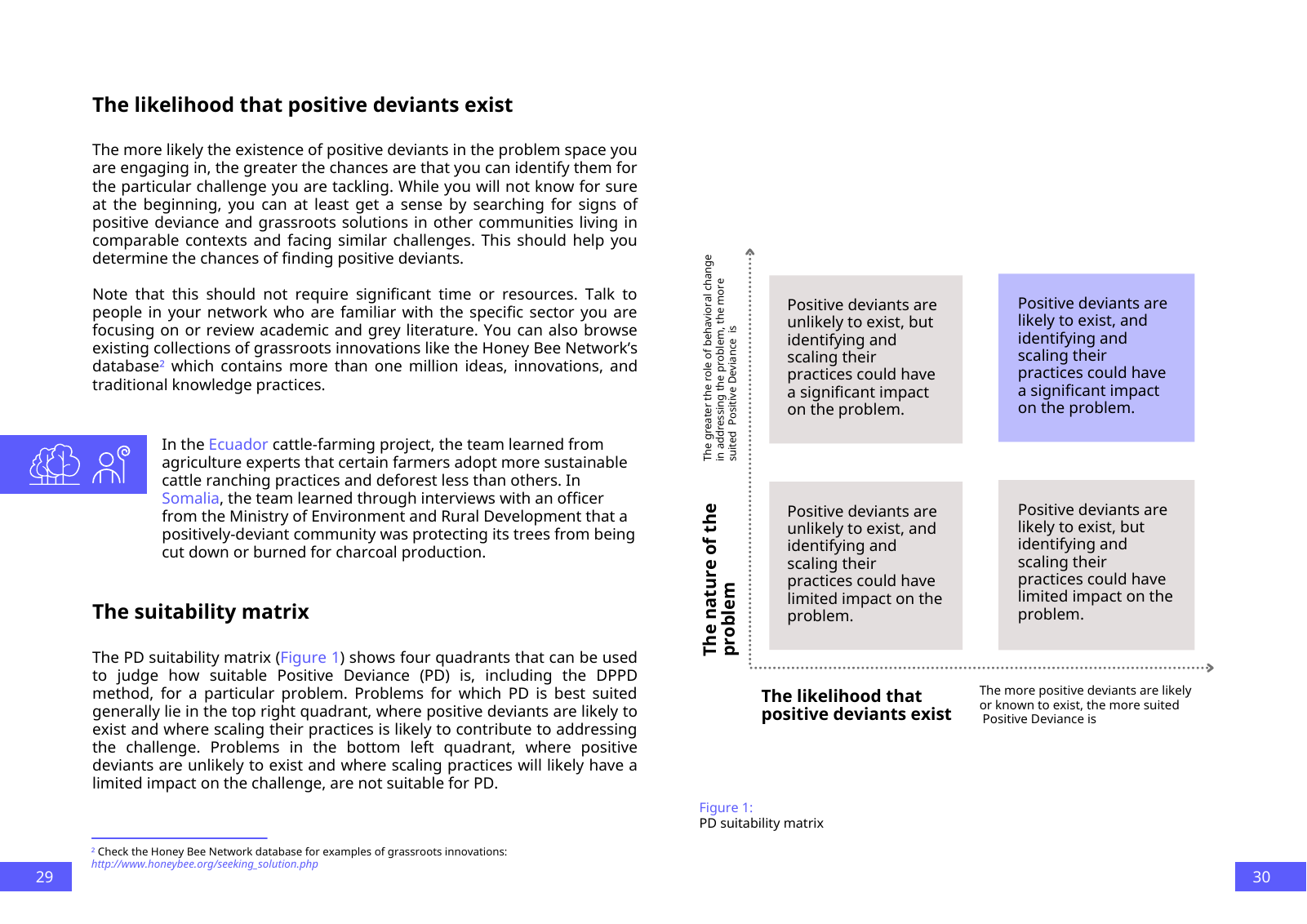In the Ecuador cattle farming project the team learned from agriculture experts that certain farmers adopt more sustainable cattle ranching practices and deforest less than others In Somalia the team learned through interviews with an officer from the Ministry of Environment and Rural Development that a positively deviant community was protecting its trees from being cut down or burned for charcoal production Th e n at u re o f th e p ro b le m The likelihood that positive deviants exist The more positive deviants are likely or known to exist the more suited Positive Deviance is Th e gr ea te r th e ro le o f b eh av io ra l c ha ng e in a dd re ss in g th e pr ob le m t he m or e su ite d P os iti ve D ev ia nc e is Positive deviants are unlikely to exist but identifying and scaling their practices could have a significant impact on the problem Positive deviants are likely to exist and identifying and scaling their practices could have a significant impact on the problem Positive deviants are unlikely to exist and identifying and scaling their practices could have limited impact on the problem Positive deviants are likely to exist but identifying and scaling their practices could have limited impact on the problem The likelihood that positive deviants exist The more likely the existence of positive deviants in the problem space you are engaging in the greater the chances are that you can identify them for the particular challenge you are tackling While you will not know for sure at the beginning you can at least get a sense by searching for signs of positive deviance and grassroots solutions in other communities living in comparable contexts and facing similar challenges This should help you determine the chances of finding positive deviants Note that this should not require significant time or resources Talk to people in your network who are familiar with the specific sector you are focusing on or review academic and grey literature You can also browse existing collections of grassroots innovations like the Honey Bee Network s database which contains more than one million ideas innovations and traditional knowledge practices The suitability matrix The PD suitability matrix Figure 1 shows four quadrants that can be used to judge how suitable Positive Deviance PD is including the DPPD method for a particular problem Problems for which PD is best suited generally lie in the top right quadrant where positive deviants are likely to exist and where scaling their practices is likely to contribute to addressing the challenge Problems in the bottom left quadrant where positive deviants are unlikely to exist and where scaling practices will likely have a limited impact on the challenge are not suitable for PD Check the Honey Bee Network database for examples of grassroots innovations http www honeybee org seeking solution php Figure 1 PD suitability matrix 29 30

Hinweis: Dies ist eine maschinenlesbare No-Flash Ansicht.
Klicken Sie hier um zur Online-Version zu gelangen.
Klicken Sie hier um zur Online-Version zu gelangen.